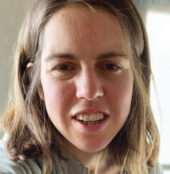The Villum Synergy has awarded interdisciplinary data-driven research projects – two projects has participation from the Department of Mathematics
The Villum Synergy programme focuses on strengthening data-driven interdisciplinary research. The Grants are awarded to projects that combine data research – statistics, computer science or applied mathematics – with disciplines from the natural sciences, the technical sciences, the humanities, or the social sciences.
Quantifying Cellular Reaction to Geometric Properties of Extracellular Environment
Ute Hahn from the Department of Mathematics and Jens Vinge Nygaard from the Department of Biological and Chemical Engineering - Medical Biotechnology receives a grant from the Villum Synergy for their project "Quantifying Cellular Reaction to Geometric Properties of Extracellular Environment".
Ute Hahn and Jens Vinge Nygaards project is about developing a mathematical model that allow them to identify important morphological traits of the material microstructure. To this end, they will develop and apply methods from stereology, stochastic geometry and biomechanics to the data. This approach is unprecedented in literature. It will serve as a building block for future investigations of cell-matrix interaction needed in materials innovation.
Stochastic optimal control: Designing dynamic nuclear polarization in large open quantum systems
Claudia Strauch also from the Department of Mathematics and Niels Chr. Nielsen from the Department of Chemistry receives a grant from the Villum Synergy for their project "Stochastic optimal control: Designing dynamic nuclear polarization in large open quantum systems".
While being one of the most important analytical technologies ever invented nuclear magnetic resonance (NMR) spectroscopy and magnetic resonance imaging (MRI) suffer a major challenge in terms of sensitivity. Claudia Strauch and Niels Chr. Nielsens project aims to develop mathematical, data-driven design strategies involving stochastic optimal control for optimising NMR sensitivity through dynamic nuclear polarization (DNP).




